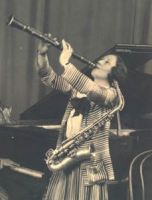
A Tale of Two Clarinetists |
Yvonne "Dixie" Fasnacht (1910 -- 2011) Jazz clarinet, vocals, night club owner "The Mardi Gras is never over." -- Dixie Fasnacht | Anat Cohen (1975 -- ) Jazz clarinet, saxophone, composer "Music has no borders and no flags." -- Anat Cohen |
Dixie's New Orleans 1910 | 1910 prices and events |
Known and beloved throughout her native New Orleans, Yvonne “Dixie” Fasnacht came from French and Swiss-German stock. Her last name seems prophetic. The Swiss-German term for the “eve of fasting” (the night before Lent) is Fasnacht. We call it Mardi Gras. One of three children of Julia Almont and Caroll P. Fasnacht, Yvonne was only 9 her mother died of brain cancer. Her older sister Irma, then 18, became the head of household, caring for Yvonne and her brother Lionel, and taking in lodgers, mostly single women, to augment the familiy income. [1] Mr. Fasnacht worked variously as a bartender, salesman and hotel night manager. He also played drums, which may account for Dixie’s early interest in music. She attended the Nicholls School (a trade school), with three talented sisters who played banjo, piano and sax. They later gained fame as The Boswell Sisters, a swinging vocal group. [2] “My daddy bought me my first clarinet,” Dixie said in a 1996 interview. “The saxophone was too expensive. Eventually I played clarinet, saxophone and beat the tambourine. What I really wanted to play was the drums.” [3] | Bread: .05/loaf Milk: .33/gallon Car: $500.00 House: $4,800 Average Income: $963/year President: William Howard Taft
In 1910 the first police woman, Alice Stebbins Wells, joined the Los Angeles Police Department. By 1916, 17 cities in the U.S. employed policewomen. Storyville, New Orleans' redlight district, arose in 1898 at the urging of Alderman Sidney Story, who wanted to limit prostitution to one area of the city. The 20-block area north of the French Quarter housed saloons, gambling houses, dancehalls and brothels. By 1910 it was flourishing. Most "houses" employed piano professors; the most famous was Jelly Roll Morton. In November 1917, after the U.S. entered World War I, the Secretary of the Navy shut down Storyville, saying too many sailors contracted diseases there. But by then many of the girls and madams had relocated to other areas of the city. [S1] |
1920s -- 1930s Harmony Maids and the Smart Set |
Yvonne learned to improvise and organized an all-girl band, The Harmony Maids. In the photo at right, Dixie sits atop the car on the right, holding her clarinet. When an all-girl band from Ohio, Smart Set, came to New Orleans to play the Orpheum Theater, they stayed at Irma’s boarding house. When they left, Yvonne went with them. [1] This was an adventurous move, considering that the country was in the midst of an economic Depression.
The Smart Set band members christened her “Dixie.” The name stuck and she has been known ever since as Dixie. | 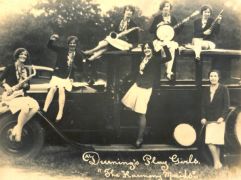  | |
The band broke up in Florida in 1933, the year Prohibition was repealed, but not before Gene Austin, manager of the all-girl band, The Bricktops, saw them. Impressed, he took Dixie, trumpeter Judy Ertle and pianist Betty Giblin, back to New Orleans for a gig. [1]
| ||
Bassist Maxine Phinney joined them and they became known as the Sophisticates of Swing Photo at right Or Southland Rhythm Girls. Photo far right | 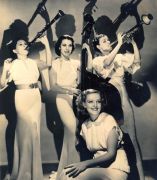  | 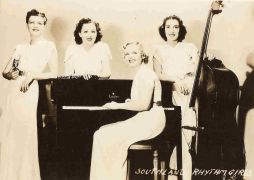  |
The quartet honed their skills by playing gigs in New Orleans; then they hit the road to play clubs in the northeast: The Back Stage Club, Cleveland; The College Inn, Chicago; the Hotel Astor and Leon and Eddies in New York City. In 1935 the band appeared in the Universal Pictures movie, Speedy Justice. [3] A 1938 Down Beat article touted the group when they opened at the Hotel Astor, “featuring Betty Giblin at the ivories, Judy Ertle blowing a hot trumpet, Maxine Phinney slapping the bass and Dixie Fasnacht hitting ‘em high on the clarinet and supplying the vocal swing.” [4] | ||
But after Dixie's father died in 1937, her sister Irma decided to open a bar. Dixie left New York and returned to New Orleans. Maybe she was tired of being on the road. Maybe she missed New Orleans. Hear her sing about it at right Back in New Orleans her career took a different path. | ||
Another Time, Another Place |
Fifty years later another girl’s life was about to change. In 1987 Anat Cohen began studying clarinet. Born in Tel Aviv, Israel, she grew up in a musical household. Her brother Yuval played saxophone; her brother Avishai played trumpet. Her clarinet studies began with classical training, but her ears took her in a different direction. [C1] "My brother Avishai was my first influence," she says. "He picked up the trumpet, and ... the way he played--with the half valves and smears--made me want to play like him. I had a strong classical foundation, but I switched my major to jazz in high school." [C2] |   |
Her first experience playing jazz clarinet was with the Jaffa Conservatory's Dixieland band. She learned to play tenor saxophone and entered the prestigious Thelma Yelin High School for the Arts, majoring in jazz. "[It was] the first year they started the jazz major," she says. "We were the guinea pigs." [C4] To complete her mandatory Israeli military service after graduation, she played tenor saxophone in the Israeli Air Force Band (1993—1995). [C1] But she still loved playing clarinet. "[It] is not so dominant in Israeli music as it is in klezmer," she says. "I heard klezmer while I was growing up, but for some reason I avoided it. I listened to Louis Armstrong instead." She says klezmer and jazz are similar. "They use simple, minor melodies, and you can bend the notes. The same thing happens in the music of other cultures. You can laugh and cry on the instrument; it's really expressive." [C2] | |
Klezmer A Yiddish term, Klezmer refers to the music of Eastern European Jews. From the 16th to 18th centuries, these musicians, klezmorim, traveled from town to town to play for Jewish festivals and special events. During the 19th century, the clarinet began to replace the violin as the instrument of choice. In the photo at right, c. 1912, the clarinetist stands in the center. [K1] The music took its inspiration from the synagogue, but also from non-Jewish culture, including elements of Gypsy, Turkish, Greek and other folk music. |   |
Between 1880 and the 1920s, many Jewish musicians arrived in the United States and carried on the klezmer tradition. Jewish composers like Leonard Bernstein and Aaron Copland were influenced by klezmer music heard in their youth. Some believe George Gershwin opened “Rhapsody in Blue” with a nod to klezmer clarinet glissandos, and Benny Goodman’s clarinet style could also be interpreted as deriving from klezmer. [K2] During the 1940s, klezmer fell out of fashion, but revivals in the 1970's, 1980s and 1990s brought renewed interest, and the music began to include elements of rock and jazz, and bluegrass. [K3] | |
With its all-night parties and diverse dance music, New Orleans is a city where cultural borrowing is normal, and klezmer, a music that has always blended diverse styles, found a natural home there. Founded in 1991, the New Orleans Klezmer All-Stars play their own interpretation of the klezmer tradition. Photo at right "When we first started playing this music, people had no idea what it was," says Arthur Kastler, the band's original bass player. "They would stand there with their jaws open.... But right away, they danced." [K3] | 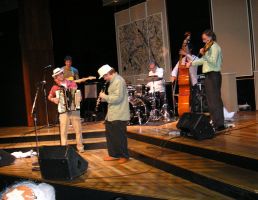  |
A New Country and New Directions 1996 -- 1999 |
In 1996, Anat moved to Boston to study at Berklee College of Music. “Berklee was crucial to my development as a musician” she says. “I was very closed-minded when I got there. I just wanted to play Coltrane, to play jazz; I didn’t think of world music at all." [C3] But musicians come from all over the world to study at Berklee, creating a diverse student body. "I met people who played music from their own country," she says, "and came to understand when a chart says ‘Latin’ on top it means almost nothing. You need to know if the music is from the northeast of Brazil, the west coast of Colombia, or someplace else. I was inspired to explore world music, starting with the music of South America, in detail.” [C3] In Boston she played tenor sax with various groups: Afro-Cuban music with Ecuadorian bassist Alex Alvea’s Mango Blue; Argentinean music with pianist Pablo Ablanedo, and klezmer music at weddings. Working with groups led by Brazilian bassist Leonardo Cioglia and Brazilian flutist Fernando Brandao provided opportunities to play Brazilian music, which Anat grew to love. It inspired her to study Brazilian percussion to master the rhythms. [C1] It also introduced her to choro. |
A challenging Brazilian musical genre, choro employs classical European harmonic progressions and demands a classical approach to technique on the clarinet, something Anat had mastered in her childhood. [3] During semester breaks, Anat went to New York to soak up musical styles ranging from world music to mainstream jazz. She began playing with Sherrie Maricle's all-woman Diva Jazz Orchestra. After studying at Berklee for two and a half years, she decided to move to New York. [C4] |   |
Dixie’s Bar of Music (1939 – 1964) |
In 1939 Dixie and Irma opened the first Dixie’s Bar of Music at 204 St. Charles Avenue. As one customer put it: “Dixie’s was the kind of place where Uptown and downtown, straight and gay, celebrities and regular folks rubbed shoulders.” [2] Irma ran the business end. Dixie provided the music, the pizzazz, and all that jazz. The house band featured Dixie on clarinet and vocals, trumpeter Judy Ertle, pianist Dorothy Sloop and bassist Johnny Senac. “The orchestra varies [but] there is always Dixie and her clarinet. She has that gift so necessary in conducting a club ... she can do three things at once: she sings, she plays [clarinet] with apparently carefree abandon, and she exchanges jokes with the guests.” [5] It wasn't the first bar in New Orleans to cater to gay patrons. Cafe Lafitte at the Blacksmith Shop, had opened in 1936 on Bourbon Street, three years after the end of Prohibition. In 1953 Cafe Lafitte moved to 901 Bourbon Street where it still operates, one of the oldest continuing gay bars in the United States. Many gay writers and artists visited or lived in New Orleans. [G2] |
  | 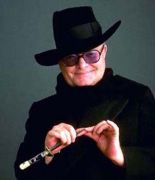  | 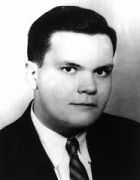  |
Playwrite Tennessee Williams visited the city for the first time in 1938. New Orleans is the setting for his most famous play, A Streetcar Named Desire (1947). | Native New Orleanian Truman Capote returned in 1945 to write the bulk of his first major work, Other Voices, Other Rooms (1948). | New Orleanian John Kennedy Toole, was awarded a Pulitzer Prize in 1981 for his posthumously published novel Confederacy of Dunces (1980). |
The first gay Mardi Gras Carnival club, the Krewe of Yuga, originated in 1958. In 1962 police raided their carnival ball and hauled the attendees off to jail. Upon hearing this, Dixie, a lesbian and staunch champion of gay rights, opened her cash register and dispatched her attorney to bail them out. [3] That year a second gay club, the Krewe of Petronius, debuted, followed by several others. By 2000, seven gay clubs presented elaborate balls. The Krewe of Mwindo, a predominantly African-American club, debuted in 1999. In 2003, the Krewe of Satyricon presented its first ball. [G2] Although New Orleans was known for its live-and-let-live attitude, homophobic attitudes prevailed well into the 1970s. In 1969, District Attorney Jim Garrison charged prominent gay businessman Clay Shaw with conspiring to assassinate President John F. Kennedy. Shaw was acquitted, but the trial destroyed his life. In 1973 fire engulfed the Upstairs Lounge, a French Quarter gay bar, killing 32 people, a horror compounded by the homophobia of the times. Some churches refused to conduct funerals for the victims, and some parents refused to claim the bodies of their children for burial. A costume party given in 1972 has grown into one of the city's largest gay events, the annual Labor Day extravaganza Southern Decadence, which rivals Mardi Gras in the number of gay tourists it attracts. It’s not known if Frances Benjamin Johnston went to Dixie’s Bar of Music, but she photographed the store at 701 Bourbon Street in 1936, twelve years before Dixie's Bar of Music relocated there. [G2] |
Frances Benjamin Johnston (1864 -- 1952) | |
The pioneer female photographer grew up in Washington, DC, where her parents mingled with the social and political elite. During the 1880s her mother wrote political articles for the Baltimore Sun. An aspiring artist, she studied at the Academie Julian in Paris, but found her creative muse in photography after George Eastman, a family friend, gave her one of his new Eastman Kodak cameras. Thomas Smillie, director of photography at the Smithsonian Institution, trained her in the use of the camera and darkroom procedures. [J2] Her most famous photograph is the self-portrait at right, c. 1896. Holding a cigarette in one hand and a beer stein in the other, she shows her legs and petticoat—all forbidden acts for women in those days. |   |
She photographed celebrities like Susan B. Anthony, Mark Twain and Booker T. Washington, and documented the work of coal miners, iron workers and women mill workers. She was the official White House photographer for the Harrison, Cleveland, McKinley, Theodore Roosevelt and Taft administrations. At the Pan American Exposition of 1901, she took the last photo of President William McKinley seconds before his assassination. [J3] | |
In 1899 she photographed black students at the Hampton Institute in Virginia. [3] In the photo at right, her early study of art is evident in the aesthetic composition, lighting and detail. She later photographed black students in classrooms at Tuskegee Institute. [J2] In 1910 she began to focus on architecture. With her partner, Mattie Edwards Hewitt (another freelance photographer), she opened a studio in New York in 1913. [J2] | 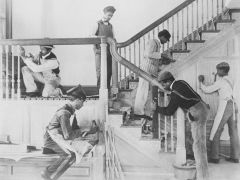  |
Between 1933 and 1940, she photographed historic buildings in 9 states for the Carnegie Survey of the Architecture of the South. The Frances Benjamin Johnston Collection at the Library of Congress includes 20,000 photographs and 3,700 negatives. [J1] | |
After completing her work for the Carnegie Foundation, Frances retired to New Orleans in 1940, where she lived with her lesbian partner, a young woman named Tom Sawyer, until her death in 1952 at the age of 88. [G2]
In 1936 she took the photo of 701 Bourbon Street at right more than a decade before Dixie’s Bar of Music relocated there. (see photo of Dixie's Bar of Music below it) |   |
In 1949 Dixie’s Bar of Music moved to 701 Bourbon Street at the corner of St. Peter Street, where it continued to attract gays, straights, and an ecclectic mix of local and nationally known patrons. Dixie and Irma lived in an apartment upstairs.
Undated photo at right: Dixies Bar of Music. |   |
At the suggestion of Louisiana author and club regular, Lyle Saxon, Dixie and Irma commissioned Xavier Gonzalez to paint a 35-foot mural for the bar. Gonzalez filled it with 66 well-known entertainers who visited the bar. Detail at right. Some celebrities featured in the mural include: Lena Horne, Xavier Cugat Louis Prima, Benny Goodman, Salvador Dali, Helen Hays, George Gershwin, Kate Smith, the Dorsey brothers, Hazel Scott, the Ink Spots, Paul Robeson, Paul Whiteman, Jack Benny, the Andrews Sisters, Connie Boswell and Dorothy Lamour. [5] |   |
The photo at right offers another view of the mural along with Dixie and her sister Irma. Smiling broadly and wearing a corsage, Dixie sits in the center. Irma sits beside her to the right. Standing at far right is Myrtle Benton, who played alto sax in the Original Shades of Blue. Photo courtesy of Rita Gibliant, Myrtle Benton's sister. | 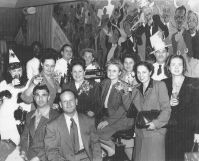  |
Time To Blossom 2000 -- 2010 |
In New York Anat established herself as a bandleader and composer conversant with modern and traditional jazz, classical music, and world music. In addition to playing lead tenor sax in the Diva Jazz Orchestra, she began playing in David Ostwald’s Gully Low Jazz Band. | |
The band explores the styles of early jazz musicians like Louis Armstrong, Jelly Roll Morton, Bix Beiderbecke and Sidney Bechet. Not everyone can play the music of Louis Armstrong. "It's something you need to dedicate yourself to," Anat says. "It's not like one music is hipper ... it's a matter of [choosing] what period you want to dedicate yourself to." [C4] She also worked with New York Samba Jazz, a quintet led by Brazilian drum master Duduka Da Fonseca. Then she met Pedro Ramos, a tenor guitarist who had recently organized the Choro Ensemble. He asked her to learn some songs for a demo CD. [C3] She fell in love with the music, which rekindled her desire to play clarinet. | 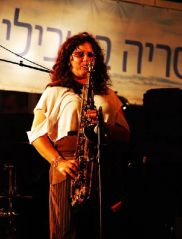  |
"[Choro] has all the important elements great music should have," she says. "It has been the mainstay of my clarinet playing for the last seven years. ... [Brazilian music] is intimate and sensual,” she says, “yet it’s for the people. Being in Brazil is fantastic because the people know the songs, and they join in with the music. Everybody feels the music.” [C3] "We like to call choro the father of samba and the grandfather of bossa nova. It's an older style ... probably the equivalent of ragtime here. ... Clarinet is one of the leading solo instruments [and] it really fits. Some of the music is very technical and very virtuoso. Some is very nostalgic. It brought me back to practicing the clarinet." [C4] | |
Although she had appeared on other albums, in 2005 she released her first CD as leader. Place and Time, features Jeff Ballard on drums, Jason Lindner on piano, Ben Street on bass, and special guest Avishai Cohen on trumpet. All About Jazz-New York named it “Best Debut Album of 2005.” [C1] A Jazz Times review said: "On tenor or soprano saxophone or clarinet, Cohen exhibits expressive tone, precise control and finesse ... and her virtuoso technique enables her to swing at breakneck tempos, as on Gerry Mulligan's hard-charging 'As Catch Can.'" [C5] | 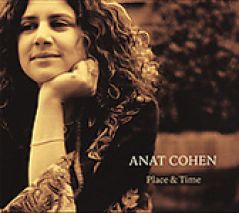  |
Her next two albums, Noir and Poetica, released in 2007, won enthusiastic reviews. Down Beat said: “Noir could be a classic ... [Cohen’s] stately intonation and unforced elegance on clarinet could take her to the top." The Washington Post said: "[She] has expanded the vocabulary of jazz with a distinctive accent of her own." [C1] On Noir, Anat plays tenor, soprano and alto saxophones and clarinet, accompanied by The Anzic Orchestra, an ensemble of three woodwinds, three trumpets, two trombones, three cellos, and a guitar-bass-drums-percussion rhythm section. Oded Lev-Ari, her high school classmate, provides the arrangements. | |
On Poetica Anat plays clarinet exclusively, with a rhythm section of pianist Jason Lindner, bassist Omer Avital, and drummer Daniel Freedman. Four cuts add a string quartet. The album includes Israeli, Brazilian, and French songs, John Coltrane’s “Lonnie’s Lament,” two of Anat's original compositions, and one by bassist Omer Avital, with whom she shares arranging duties. [3] Said the Washington Post: “Cohen has emerged as one of the brightest, most original young instrumentalists in jazz … [Poetica] demonstrates her remarkable range as a musician and composer ... [and her] mastery of the clarinet.” [C1] |   |
However, she remains committed to live music. She would like to see more places for musicians to hang out and learn from each other. Hear her in this 2008 live concert In a 2008 interview she lamented: "There aren't enough places to play. I think probably it's the economy ... I'm not really sure. Maybe the fact that there's so much cable TV. [It's] hard to get people out of the house. ... I love going out and hearing live music. I love to see people on stage and get the spirit and see what people do." [C4] |   |
In 2008, she released Clarinetwork: Live at the Village Vanguard. Joining her are pianist Jason Lindner, bassist Omer Avital, drummer Daniel Freedman, and on three tracks, guitarist Gilad Hekselman. The album features her own compositions and music by Fats Waller, John Coltrane, Sam Cooke and Ernesto Lecuona. “I really wanted to capture the free, risk-taking, open quality this band achieves when performing live,” she said. “I also wanted to stretch my compositions and arrangements. [C1] Down Beat gave the album 4 stars, saying: “Cohen makes it seem easy, mixing a gift for melody and an improvisational fluidity that has few peers today.” [C1] An allaboutjazz.com review says: “Anat Cohen can make the clarinet sing. ... Her flowing melodic lines swoop and soar like arias. ... Released prior to the 2009 Benny Goodman centennial, this [is] ... one of the finest tributes made to [him]. However, it is impossible not to be continuously under the spell of Cohen herself. ... It is a joy to hear her duel with virtuoso pianist Benny Green. [At times they] recall the delightful 1980 musical conversation between Goodman and pianist Teddy Wilson on "Sweet Georgia Brown." [C4] | |
In 2009 Anat received "The ASCAP Jazz Wall of Fame Prize for composition and musicianship" and the Jazz Jouralists Association voted her clarinetist of the year. [C1] Hear her incredible clarinet performance at the 2010 Newport Jazz Festival When asked if she sees herself as an Israeli ambassador to music, Anat replies: "I see myself as an international musician. When I play, I respect the source of the music, whether it's Cuban, Brazilian or Israeli. I try to bring that to all of the music I play. Music has no borders and no flags." [C2] As we enter the second decade of the 21st century, we anticipate hearing more exciting music from this talented young musician. | |
The Mardi Gras Never Ends | |
In 1957, Dixie cut her only record, Sloopy Time, featuring her talented trio of women. Pianist Dorothy Sloop (aka Sloopy) hailed from Steubenville, Ohio, and played her first gig at 14. New Orleans native Maeceil Silliker began playing drums at 9. Her father, George Peterson, was a drummer and well-known music educator. Dixie plays clarinet solos and provides the swinging vocals. [6] Hear two samples at right. I'm In the Mood For Love, features Dixie on clarinet. Her vocal rendition of Lazy River sizzles and swings. | |
In 1964, Dixie and Irma sold the bar and bought a cottage on the lower end of Bourbon Street. But they remained a fixture in the French Quarter social scene, entertaining with lavish Mardi Gras parties on their enclosed patio. Although her beloved sister Irma died in 1993 at the age of 91, Dixie continued to host parties on her patio during Mardi Gras and other celebrations. [3] | |
In 1989 she was one of two Honorary Grand Marshals for the 19th New Orleans Gay Pride Parade. Photo at right: Queen Dixie In a 1996 Times-Picayune feature article, David Cuthbert notes: “Her red hair is carefully coifed, her outfit immaculate." [7] Speaking about her career, she says: “... it seems like yesterday to me. I can’t imagine I’ve lived this long – 85 years. It doesn’t seem possible. So many people my age – or even younger – are kaput. But I’m here, honey, and I’m hangin’ in!” [7] | 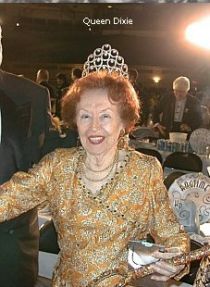  |
On April 13, 2005, I gave a lecture on all-women big bands at the Smith Library in New Orleans. Library director Ed Real invited Dixie to attend. Afterwards, Dixie invited me to visit her. Between April and late August, when Katrina decimated the city, we met several times at her Bourbon Street home. At Dixie's 95th Birthday Party in 2005 I played Happy Birthday on my trumpet and gave her a photo of her group, Southern Rhythm Girls. | |
Dixie evacuated for Katrina in August 2005 but later returned to her Bourbon Street home. In 2010, soon after her 100th birthday the house was sold and Dixie moved to Metairie, LA to live with her grand-nephew. On Sunday, November 13, 2011, at the age of 101, Dixie's mighty heart gave out. The final chord has sounded, but remember ... The Mardi Gras never ends. | |
COMMENTARY There are certain similiarities between Dixie Fasnacht and Anat Cohen. Both began their musical training on clarinet. Neither exhibited an interest in playing classical music. Both later learned to play saxophone. However, their careers blossomed in different eras and their playing styles are quite different. After 1930 Dixie played only clarinet and developed a swinging vocal style. Anat still plays saxophone with several groups, but in recent years she has focused on playing clarinet. Although born many decades and thousands of miles apart, both women exhibited a similar adventurous spirit. When she was barely twenty Dixie left her hometown of New Orleans in the midst of an economic Depression to tour with women she had only recently met. At about the same age Anat left her native Israel to move to Boston, then New York. “Growing up in Israel and seeing all the movies of New York, [that] was always a scary place for me,” Anat says. “[As] as a woman ... you’re a little bit more vulnerable. A bigger target for anything to happen.” But then she thought: “Why not live in New York? Lead a musician’s life, like any other man I know. They go out, they play gigs, they have their life. ... So I decided to move to New York.” [C4] Anat’s early musical experiences were also quite different from Dixie’s. Anat had two brothers who played instruments. Dixie did not. As a teenager, Dixie organized an all-girl band and went on the road with another all-female group. At that time this was probably her only option. During the 1930s, it was rare for women other than vocalists to work with male jazz groups. Saxophonist Vi Burnside, touted by many critics as the equal of male saxophone players, worked only with all-women big bands like the International Sweethearts of Rhythm [click the link to hear her play], or leading her own quintet of women players. But Dixie was not averse to working with men. She hired the musicians that worked in her bar, and the bassist in the house band was a man. Years later, she complained that when she made Sloopy Time, the record company wouldn’t let her use him for precisely that reason. [2] Even in 1957 the producers apparently felt it was easier to promote an all-female group.
By the time Anat Cohen took up the clarinet in the mid-1980s times had changed. She grew up playing in mixed gender groups: in school, in college, in the Israeli Air Force Band, and with her two musical brothers. Later she worked and recorded with Sherrie Maricle’s all-women Diva Jazz Orchestra. However, all the recordings she has produced to date include male musicians. |
Gender Issues in the Classical World In 1909, saxophone virtuoso Elise Hall appeared with the Boston Symphony Orchestra for two concerts. The reason? According to an article in Musical America (2/26/1910), “no other competent saxophonist could be found” to play the saxophone solo in Bizet’s L’Arlesienne Suite no. 1. At that time the BSO, like most promineint orchestras, employed no women. Not until the 1940s did the BSO contract a female player. Hall had a significant solo career. Several prominent composers, including Claude Debussy and Vincent d'Indy, wrote pieces for her. In March 2000, Boston saxophonist Ken Radnofsky organized a musical tribute to her in a Women’s History Month concert. See his Biography of Elise Hall By the 1970s, classical orchestras were hiring women in greater numbers, but even in 1982 one talented female clarinetist met stiff resistance. German-born clarinetist Sabine Meyer was hired to play in the Berlin Philharmonic by Herbert von Karajan, the orchestra's music director. Her appointment caused considerable controversy. Meyer was shunned by some of the orchestra players and at the end of her probation period, the players voted against her by a vote of 73 to 4. The orchestra said her tone did not blend with other members of the section, but many, including Karajan, believed the real reason was her gender. In 1983 Meyer left the Berlin Philharmonic to become a full-time soloist and has since enjoyed a highly successful career, soloing with prominent orchestras all over the world. See Sabina Meyer Biography Dixie and Anat: Role Models and Inspirations Although Dixie never cited specific role models, her father played drums, and at the Nicholls School, she met other talented women like the Boswell Sisters, who also played instruments. In addition to her musical brothers, Anat cites a number of musical influences. As a young clarinetist, she listened to Benny Goodman. After she discovered Latin music, she listened to Paquito D’Rivera and Ken Peplowski. Early influences on saxophone included Sonny Rollins, Dexter Gordon and John Coltrane. [C4] LEGACY Dixie Fastnacht remains a legend in her native New Orleans to this day. For twenty-five years, thousands of patrons passed through Dixie’s Bar of Music, partaking of Dixie’s musical talent and theatrical flair. But it is perhaps in the gay community that she is most beloved and admired. Patrick Shannon wrote in his article: “[Dixie’s Bar of Music] was considered ... the best and safest club catering to gay men and lesbians. Dixie’s [Bar of Music] was in fact a brave and wonderful institution, one of the few that treated [gays] with respect.” [5] Relatively speaking, Anat Cohen’s career is in its infancy. Her many CDs constitue an impressive body of work, one we presume will continue to grow. She already serves as a role model for young female musicians, especially clarinetists. After a concert she played with Diva in which she played a clarinet solo in a tribute to Benny Goodman, she says: “Three girls came up to me after the concert ... and they said, ‘Wow. That was amazing. We play clarinet and our teacher told us, you can’t play jazz on clarinet.’” Whereupon, Anat told them: “Well. I guess you can.” She later said: “They didn’t know better, but after that they knew.” [C5] |
Discography |
Dixie Fasnacht Sloopy Time (1957) was her only recording. It is currently unavailable. In 1935 the Southern Rhythm Girls appeared in the Universal Pictures film, Speedy Justice. Anat Cohen To hear samples and buy her CDs on her website, click here In addition to those featured in the article, here is a partial discography: Braid / 3 Cohens (Anzic Records 2007), Yuval, Anat and Avishai Cohen with: Aaron Goldberg on Piano, Omer Avital on Bass & Eric Harland on Drums! Waverly Seven / Yo Bobby ! (Anzic Records 2007); Choro Ensemble / Nosso Tempo (Anzic Records 2007) Jason Lindner Big Band / Live at the Jazz Gallery (Anzic Records 2007) Duduka da Fonseca / Samba Jazz in Black & White (Zoho 2006); Choro Ensemble / Choro Ensemble (Circular Moves, 2005); 3 Cohens / One (2004) debut CD of the 3 Cohens: Yuval, Anat and Avishai Cohen Five Play...Plus (Arbors 2005) Five Play is the smaller version of the Diva Jazz Orchestra. TNT: Tribute to Tommy Newsom (2005) the Diva Jazz Orchestra plays tribute to the great Tommy Newsom |
Sources: Dixie Fasnact 1. A Feminist Perspective on New Orleans Jazz Women, Sherri Tucker, (draft 6/9/2004) from the New Orleans Jazz Historical Park Research Study 2. “Rocking the Cradle of Jazz,” Sherri Tucker, Ms Magazine, Winter 2004/2005
4. “They Open At New York’s Astor,” Down Beat, November 1938 5. The Friends of Joe Gilmore (1948), Lyle Saxon, quoted by Patrick Shannon in “Dixie Honored at Diane’s: A Golden Age Revisited,” Impact, June 27, 1986 6. Uncredited liner notes: Sloopy Time, Golden Crest Records, Inc., 1957 7. “Dixie land,” David Cuthbert, New Orleans Times-Picayune, May 18, 1996 A taped oral history with Yvonne Dixie Fasnacht (October 14, 1999) is held in the Hogan Jazz Archives at Tulane University, New Orleans. | Sources: Anat Cohen Number preceded by C C2 “Jazz clarinetist Anat Cohen—so many roads,” Kirk Silsbee, July 23, 2008, JewishJournal.com C3 Anat Cohen Biography, allaboutjazz.com C4 “Anat Cohen: Time To Blossom,” R. J. Deluke, June 18, 2007, allaboutjazz.com C5 Anat Cohen: Place & Time, David Franklin, June 2005, jazztimes.com Sidebar Sources: S1 Storyville. New Orleans 1900 to 1920, Mary Lou Widmer, 2007, p. 100 G2 Gay Life in New Orleans, A Southern Bohemia, in glbtq online encyclopedia Klezmer Music K2 Visions of Jazz: The First Century, Gary Giddins, 1998 K3 Biography, New Orleans Klezmer AllStars |
Sources: Frances Benjamin Johnston J1. Frances Benjamin Johnston Collection: Prints and Photographs Division, Library of Congress. J2. "A Gift from George Eastman," Donna Chasen, 1/15/2005, Fredericksburg.com J3. Biography of Frances Benjamin Johnston, Richard Bland College See also Bettina Berch's biography, The Woman behind the Lens: The Life and Work of Frances Benjamin Johnston, 1864-1952. Here is a link to more Johnston's photos | |
© copyright 2011 Susan Fleet




